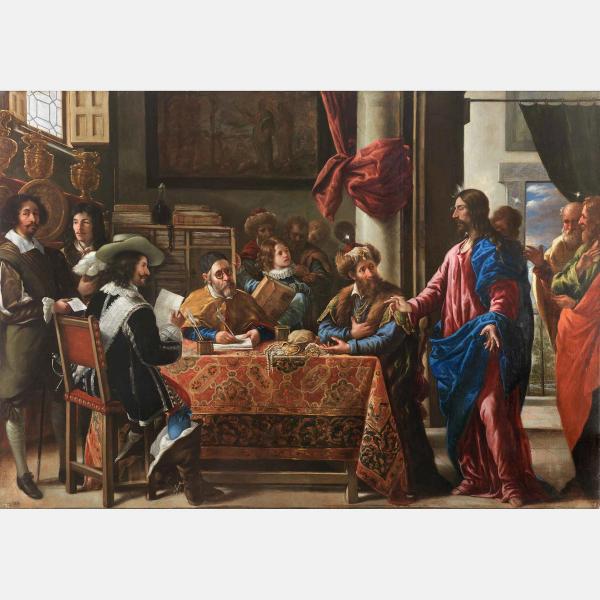The Calling of Saint Matthew
Artwork Details
- Title: The Calling of Saint Matthew
- Artist: Juan de Pareja (Spanish, Antequera 1606–1670 Madrid)
- Date: 1661
- Medium: Oil on canvas
- Dimensions: 88 9/16 in. × 10 ft. 7 15/16 in. (225 × 325 cm)
- Classification: Paintings
- Credit Line: Museo Nacional del Prado, Madrid
- Curatorial Department: European Paintings
Audio

638. Calling of Saint Matthew, Juan de Pareja, 1661
NARRATOR: The Calling of St. Matthew is Juan de Pareja’s most famous work.
CARMEN FRACCHIA: On the right hand side, we have Jesus and his disciples. On the left hand side we have accountants and visitors. Among the visitors is Pareja.
NARRATOR: Carmen Fracchia is a professor of Hispanic Art History at Birbeck, University of London.
CARMEN FRACCHIA: He’s the one who’s looking at us, inviting us into the painting. And we know it’s him because he’s holding a piece of paper where the signature and the date are there. “I made this painting” written in Latin. This is the only self-portrait that we know by an Afro-European artist in the early modern period.
NARRATOR: That alone is notable. But Fracchia, who has studied this painting and Juan de Pareja for over twenty years, believes that the way the artist depicts himself is even more important.
Though he was a formerly enslaved man of African descent, here his pose and the details of his clothing recall his earlier portrait and indicate the likeness of a free European. And, in contrast to Velázquez’s portrait, Pareja places himself in a religious setting. These details all serve a purpose, especially during this period when Christianity and freedom were closely linked.
CARMEN FRACCHIA: Because we know that the main thing in portraiture is the likeness of the sitter. You have to recognize the person who is depicting himself or herself. But this is not happening here at all. He needed to portray himself as a free man in order to be accepted as a painter. But how could he depict himself as a free man? There was no such vocabulary. The moment that Pareja decided to embed himself, he actually invents a new iconography.